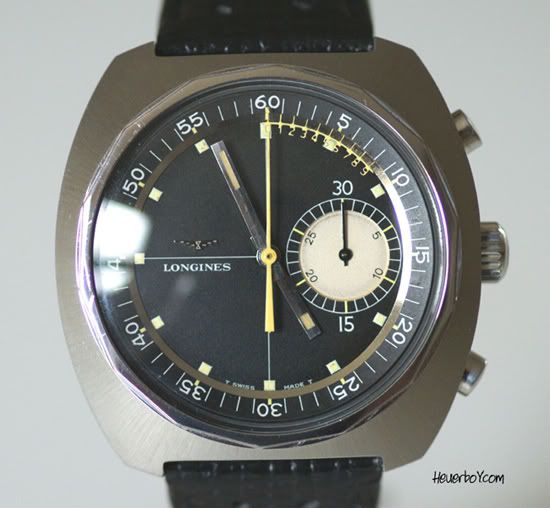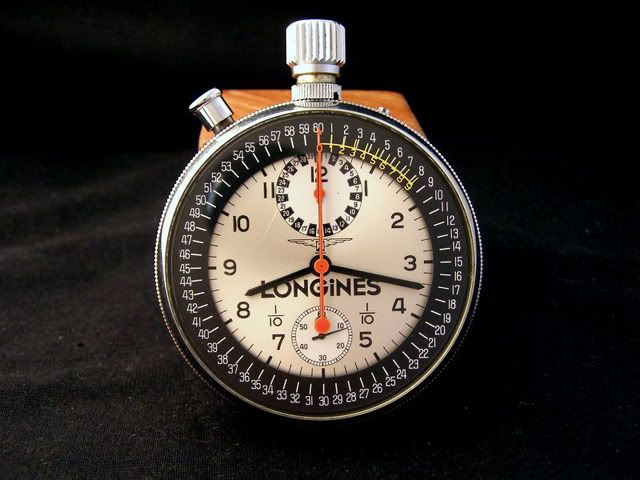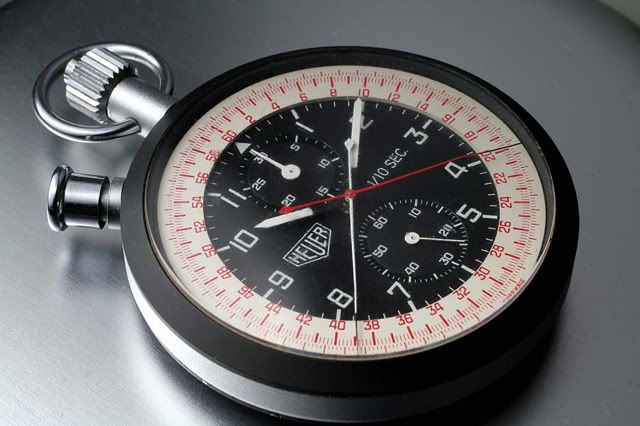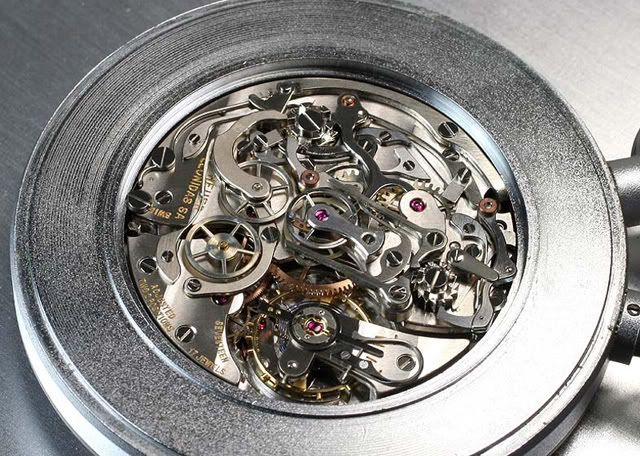| Informational Websites | ChronoMaddox -- the legacy of Chuck Maddox | OnTheDash -- vintage Heuer website | Zowie -- Omega information |
| Discussion Forums | ChronoMaddox Forum | Heuer Forum | Omega Forum |
| Counterfeit Watchers | ChronoTools Forum | ChronoTrader Forum |
|
|
The largest independent, non-commercial, consumer-oriented resource on the Internet for owners, collectors and enthusiasts of fine wristwatches. Online since 1998. | |||||||
|
||||||||
|
||||||||
 |
Vintage Heuer Discussion Forum
The place for discussing 1930-1985 Heuer wristwatches, chronographs and dash-mounted timepieces. Online since May 2003. | ||||||
| |||||||
| |||||||
Here's a nice posting addressing my questions (also copied below) --
http://www.tz-uk.com/forum/viewtopic.php?f=1&t=184474&p=1867100#p1867100
Jeff
+++++++++++++++++++++++++++++
Hi Jeff,
Redesigning the Val. 72 to run at 36,000 bph would have meant changing all the wheels and the escapement, and Longines didn't do that, so you are right, the vernier scale cannot be used to measure the the nearest 1/10 sec. The other Longines model fitted with a vernier scale was the Nonius (below) which was powered by the L538 (or 30CH) which also ran at 18,000 bph, so the vernier is a bit of a gimmick in both cases. I guess they didn't have a choice as they weren't producing a 36,000 bph wristwatch calibre back then.

These watches a wrist going 'tribute' to their pocket watch, fitted with a vernier second hand and a calibre L262, which did run at 36,000 bph.

Check out the movement... lovely! (first introduced in 1939)

I'm sure you're already aware, being a Heuer guru and all, but others may not be, Heuer/Leonidas also had a 1/10th pocket watch in the same period powered by the equally lovely Valjoux Cal. 9 (Notice that the Heuer just has the 1/10's scale printed in the chapter ring).


I'd still have a Nonius in my collection though given the chance, despite its shortcomings.
Geez, I really rattled along there... I hope I didn't bore anyone to death.
Rich.
| Chronocentric and zOwie site design and contents (c) Copyright 1998-2005, Derek Ziglar; Copyright 2005-2008, Jeffrey M. Stein. All rights reserved. Use of this web site constitutes acceptance of the terms of use. | CONTACT | TERMS OF USE | TRANSLATE |